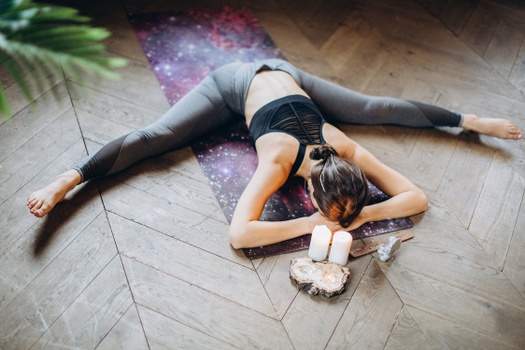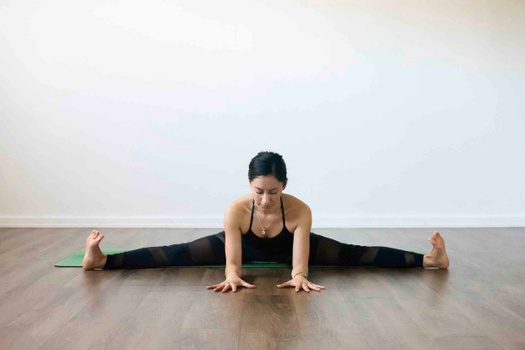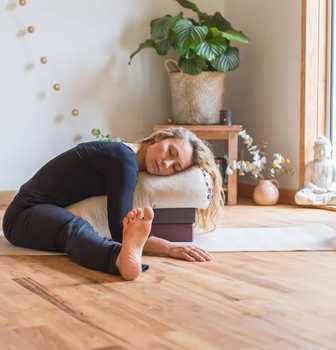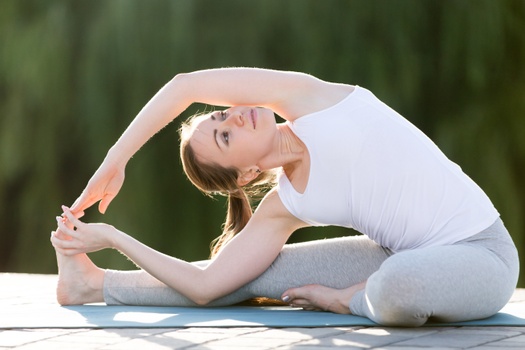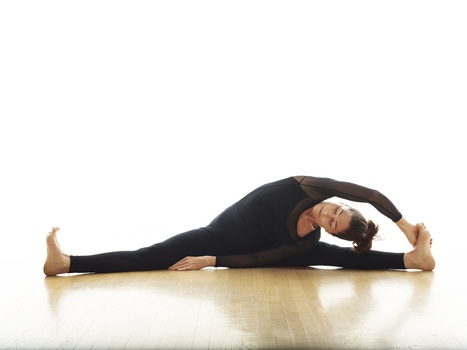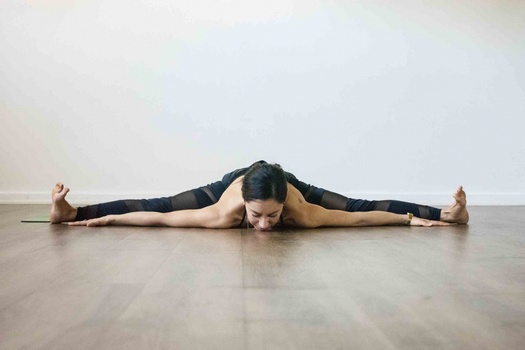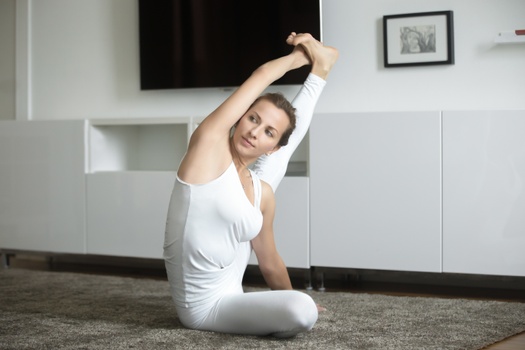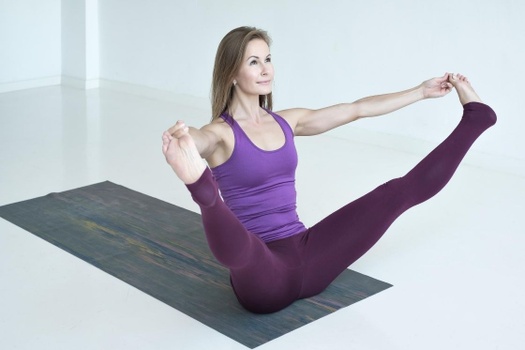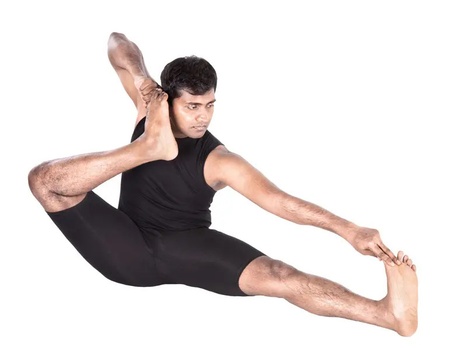Upavistha Konasana is very helpful for building strength in the legs and relieving back lower back pain. This posture is divided into the following four different phases.
Part 1 - Preparatory Poses for Upavistha Konasana
To begin, start with some simple leg and lower back stretches to add mobility to dormant muscles. You can begin with a dynamic yoga flow sequence like sun salutations and then move to the following hip openers for a deeper activation of the legs:
1. Dandasana (Staff Pose) - The Upavistha Konasana belongs to the seated yoga pose category. In this pose, it’s important to find pelvic stability and spine strength in order to sit upright in the staff pose.
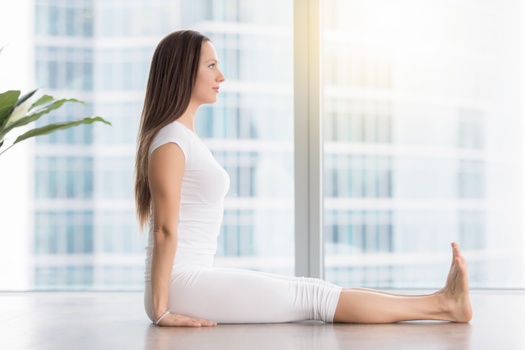
Close your eyes and sit in Dandasana for 2 to 5 minutes. The longer you hold this staff-like alignment, the stronger your spine will be for your upcoming wide-angle stance.
2. Baddha Konasana or (Bound Angle Pose) - From the staff pose, move into Baddha Konasana. Here, bend your legs and touch your feet in Namaste formation. Hold both feet with your palms and keep your knees close to your yoga mat.
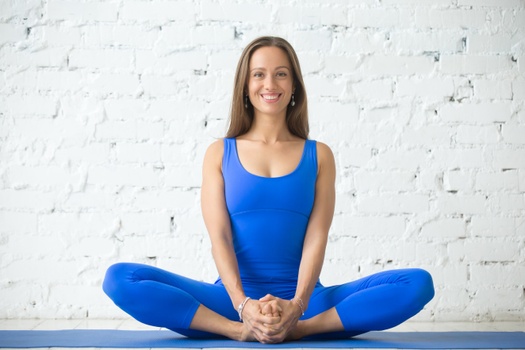
Inhale, then exhale and close your eyes as you maintain this pose. You will feel a slight stretch in your thighs. You can hold this pose for 2 to 5 minutes.
3. Baddha Konasana Uttanasana (Bound Angle Forward Bend Pose) - If you're unable to feel your legs stretching in upright Baddha Konasana, try bending your upper body forward for a deeper stretch.
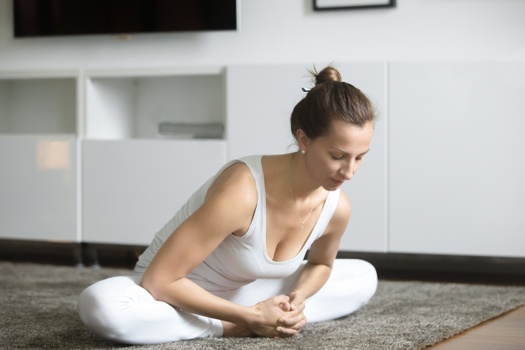
You can also place your head on the ground as you bend forward. Hold this pose for a couple of minutes. Ensure that you exhale while coming down, and that your knees are close to the mat.
Part 2: Step-by-Step Instructions to Perform Upavistha Konasana
The following are steps to practice the Wide-Angle Seated Forward Bend:
Step 1- Start with Staff pose and sit upright on top of your pelvic bones.
Step 2- Sit with your legs extended and your arms relaxed at your sides in the Staff pose. Inhale and exhale for a few seconds here.
Step 3- Now, spread your legs slowly, as wide as possible, and place your hands flat on the mat.
Step 4- Inhale deep, and lengthen your spine all the way up to the crown of your head. Exhale, bend at your waist, and press down through the backs of your legs.
Step 5- Walk your hands forward as far as you can go. Keep your back straight and your spine parallel to the ground.
Step 6- Hold this position for a few deep breaths and then gently exit the pose by getting up in the staff pose.
Breath Awareness:
Inhale as you lengthen your spine and flex your legs wide.
Exhale as you bend your upper body forward.
Performance Duration for Beginners: Hold Upavistha Konasana for 1 minute.
Performance Duration for Advanced: Hold Upavistha Konasana for 5 to 10 minutes.
Part 3: Things to Keep in Mind
Alignment is essential for practicing every yoga asana, and here are a few posture tips for beginners before starting the Upavistha Konasana practice:
Do not overstretch your legs: Yes, it's true that the more you try to stretch your legs wide, the more flexible and strong you will become.
But, overstretching as a beginner without the necessary hip and leg mobility can cause muscle tears in your abductors and hip flexors. Only stretch to a level that helps you grow without overdoing it.
You don’t need to lean down all the way: If your hip flexors and tail bone are not strong, you might have difficulty leaning forward. Don’t rush into bending your upper body forward.
You can try bending your upper body halfway until it's not painful. With time, you’ll build flexibility in your back, and then if you feel comfortable, you can lean forward to the ground.
Part 4: Relaxing Poses After Upavistha Konasana
Wide-Angle Seated Forward Bend can cause a lot of fatigue, as well as stress on your thighs, core, and back. That’s why it’s essential to perform the following relax poses after you’ve practiced Upavistha Konasana:
1. Paschimottanasana (Seated Forward Bend): As you end your Upavistha Konasana practice on Staff pose, continue the seated forward bend from there.
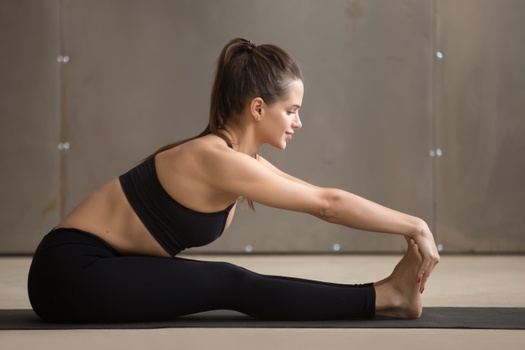
From Dandasana, inhale deep and raise both arms overhead. Now, bend forward and exhale as you rest your head on your knees. Hold this pose until you feel the tension release in your low back and glutes.
2. Balasana (Child's Pose):If your upper body and low back are still too tight, get into the Child's pose. Start seated on top of your knees and bend your upper body toward the mat.

Flex your arms and shoulders in front of you while resting your forehead on the mat. Keep exhaling deeply while you hold this pose with your head down for 3-5 minutes.
3. Ananda Balasana (Happy Baby Pose): If you want to relax your pelvic bones, thighs, and low back even more, try the Happy Baby pose.
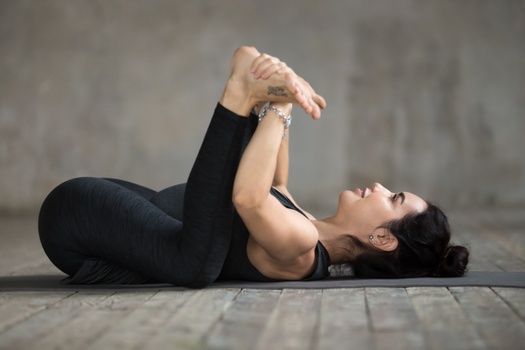
Lie on your back and grab your feet with your hands like a newborn baby. Exhale and close your eyes as you get into this pose. Keep breathing deeply and try to relax any left-over stress points lingering in your body.
